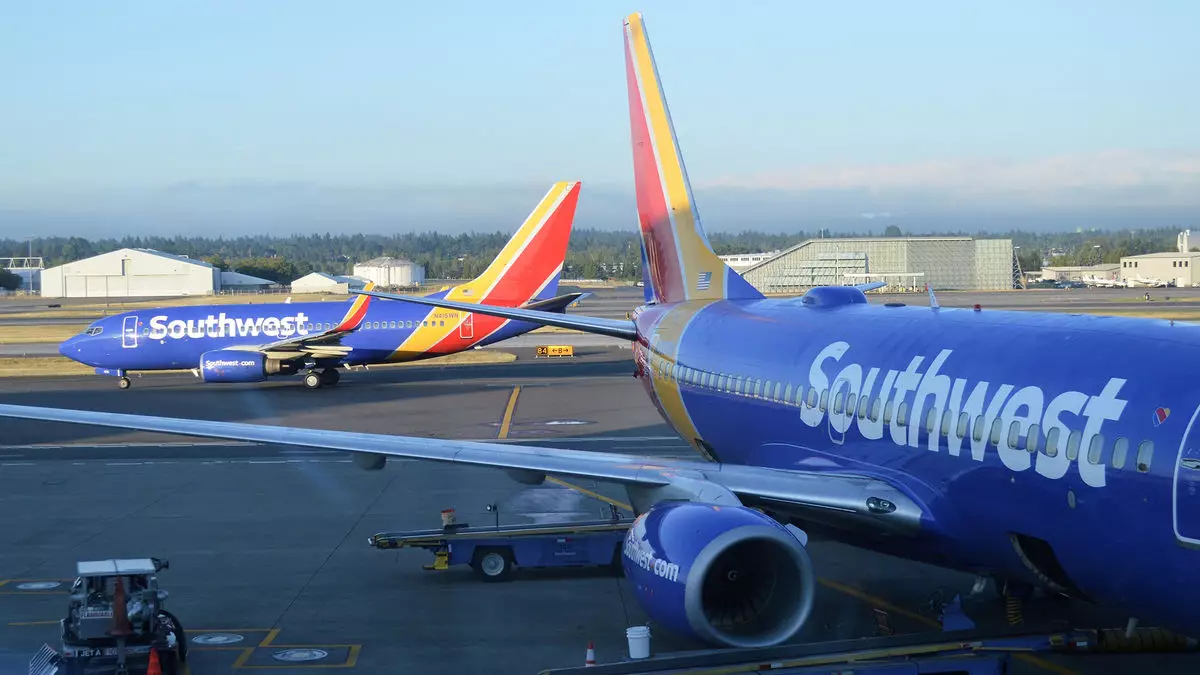Southwest Airlines has recently undergone significant governance changes following a withdrawal of a proxy challenge initiated by Elliott Investment Management. This move marks a pivotal moment in the company’s leadership structure and strategic direction amidst growing external pressure for reform. By examining the implications of these shifts, we can understand how they may affect the airline’s trajectory in the highly competitive aviation market.
Elliott Investment Management, known for advocating corporate change, initially sought to orchestrate a proxy vote on December 10 aimed at installing eight new nominees to take substantial control of the board. Their strategy included a push to oust key figures such as Chairman Gary Kelly and CEO Bob Jordan, citing sluggish innovation and unsatisfactory financial performance as reasons for their dissatisfaction. However, a recent agreement has emerged that has substantially altered this dynamic.
As part of the newfound agreement, the composition of the Southwest board of directors will see the introduction of six new members, five of whom were originally recommended by Elliott. This transitional board will not only preserve the roles of some existing leaders but will also facilitate a shift towards broader governance reforms. Gary Kelly, who has been a longstanding figure at Southwest, has accelerated his departure from the role of chairman to November 1, rather than May, exemplifying a willingness to respond to shareholder sentiments while still maintaining continuity in leadership.
The appointment of new board members is a significant step toward revitalizing Southwest’s strategic outlook. The new board lineup consists of seasoned professionals with varied backgrounds, including David Cush, former CEO of Virgin America, and Gregg Saretsky, the former chief of WestJet. Each member brings unique insights and perspectives that can foster innovation and operational improvements within the company.
Elliott’s involvement and the resulting board restructuring are designed to create an environment conducive to enhanced business performance. Their public statements reflect a commitment to operational execution and long-term value creation for shareholders. By aligning management with the expectations of influential investors, Southwest is opening the door to potential partnerships and service innovations that could redefine its market position.
Southwest’s leadership transition coincides with a strategic roadmap aimed at generating an estimated $4 billion in incremental revenue by 2027. Central to this initiative is the airline’s move toward implementing assigned seating, a significant shift for a carrier historically known for its open seating policy. Moreover, plans for in-house vacation packages and higher fleet utilization levels demonstrate a commitment to increased efficiency and enhanced customer offerings that could attract new clientele, particularly in the leisure travel segment.
Moreover, by establishing airline partnerships—starting with Icelandair—Southwest is not merely expanding its market reach but also diversifying its service offerings. This pivot could significantly enhance customer experience and loyalty, ensuring that Southwest remains competitive against both traditional and low-cost carriers.
Despite these positive developments, challenges remain. The departure of three nominees, including Robert Milton, whom Elliott had proposed as an alternative chairman, reveals underlying tensions in the governance negotiations. This omission raises questions about the true extent of Elliott’s influence and whether the newly constituted board will be empowered to enact substantial change or simply maintain the status quo.
Furthermore, market conditions in the airline industry can be volatile, influenced by fluctuating fuel prices, global economic uncertainties, and ongoing competition. The success of Southwest’s new initiatives and board restructuring will ultimately depend on its ability to respond to these external pressures while executing its strategic vision effectively.
The recent developments at Southwest Airlines signify a new chapter in its governance and operational strategy. With a restructured board and a clear set of strategic objectives, the airline is poised to navigate the complexities of the aviation industry more adeptly. Nevertheless, the effectiveness of this transformation will rely heavily on the alignment of its new board, continued innovation, and responsiveness to the fast-evolving market landscape. The operational decisions made in the coming years will be critical in determining whether Southwest can enhance its competitive edge and deliver significant value to its shareholders.

